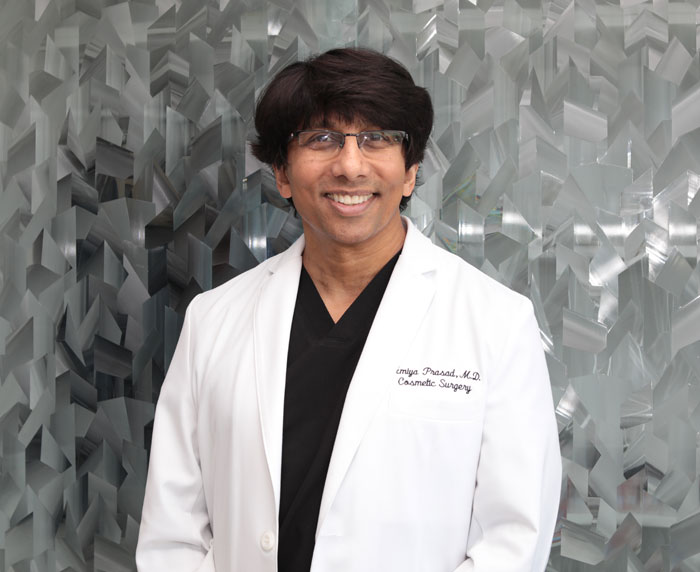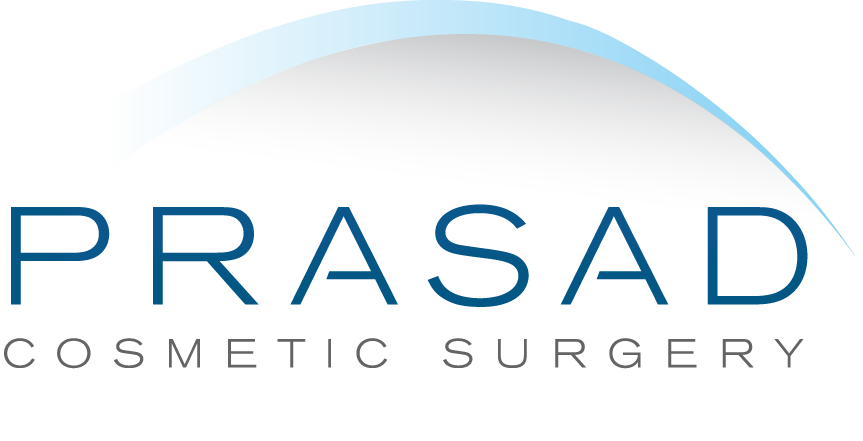Thyroid Eye Disease: How to Fix Retracted Eyelids and Restore Comfort
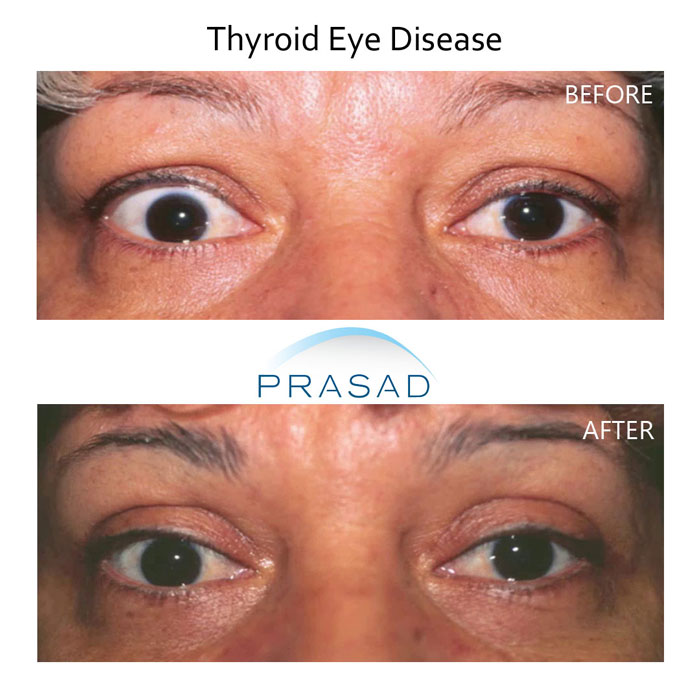
Thyroid eye disease (TED), also known as Graves’ disease or thyroid-related immune orbitopathy (TRIO), can significantly affect the appearance of the eyes and eyelids. Many people suffering from this condition are eager to improve their appearance and seek surgical solutions. However, it is essential to understand the progression of the disease, and how it is managed before determining the optimal time for surgery.
How Thyroid Eye Disease Affects the Eyes
Thyroid eye disease (TED) occurs when antibodies in your blood affect the thyroid, and the tissue surrounding the eyes. Inflammation from TED can impact the muscles and fat behind the eyes, causing the eyes to bulge or protrude forward. This can lead to eyelid retraction, with or without eye bulging, resulting in a “staring” appearance.
Stages of Thyroid Eye Disease
Inflammatory Stage
During the inflammatory stage, medical management focuses on reducing inflammation and regulating thyroid hormone levels. Treatments may include radioactive iodine, steroids, radiation therapy, and medications to adjust thyroid hormone levels. This stage typically lasts 2 to 5 years, and surgery is generally not performed unless vision is compromised.
Fibrotic Stage
After the inflammatory stage, patients enter the fibrotic stage, where the appearance of the eyes stabilizes. To confirm this, I use an exophthalmometer to measure eye prominence, as well as conduct slit lamp examinations and take clinical photos when appropriate.
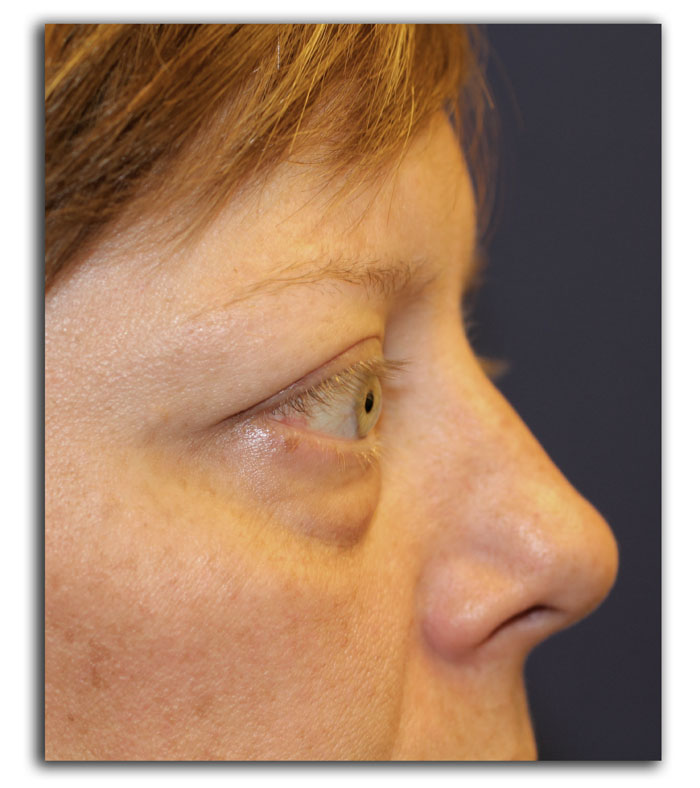
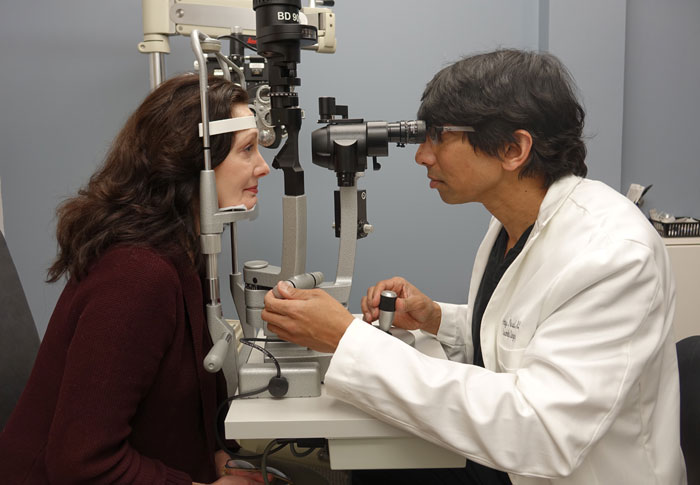
Thyroid Eye Disease Surgery and Eye Restoration
I routinely perform procedures to address eyelid retraction and changes in the skin, and fat volume around the eyes. Thyroid eye disease can also cause ptosis (drooping eyelids), and laxity in support structures like the lateral canthal tendon. For example, I treat lower eyelid retraction with specialized procedures to raise the vertical height of the lower eyelid using a graft, such as decellularized dermis. I also reposition or reinforce the lateral canthal tendon through methods like canthopexy or canthoplasty, depending on the individual case.
How to Fix Retracted Eyes
Upper eyelid retraction can be treated through Muellerectomy, which involves removing a muscle called Mueller’s muscle. I also perform procedures on the levator muscle (which lifts the eyelid) to help the eyelid move downward, often using graft materials like temporalis muscle fascia.
Excess skin and fat around the eyes can be addressed with traditional cosmetic procedures, such as upper and lower eyelid blepharoplasty. However, due to the prominence of the eyes and the inflammation caused by TED, I believe these procedures require the unique skills and experience of an oculoplastic surgeon.
Procedure and Recovery Time
I typically perform these eyelid restoration procedures under local anesthesia with LITE IV sedation, avoiding general anesthesia. This allows patients to remain comfortable and return to work often within a week. I carry out these procedures in my in-office surgical facilities.
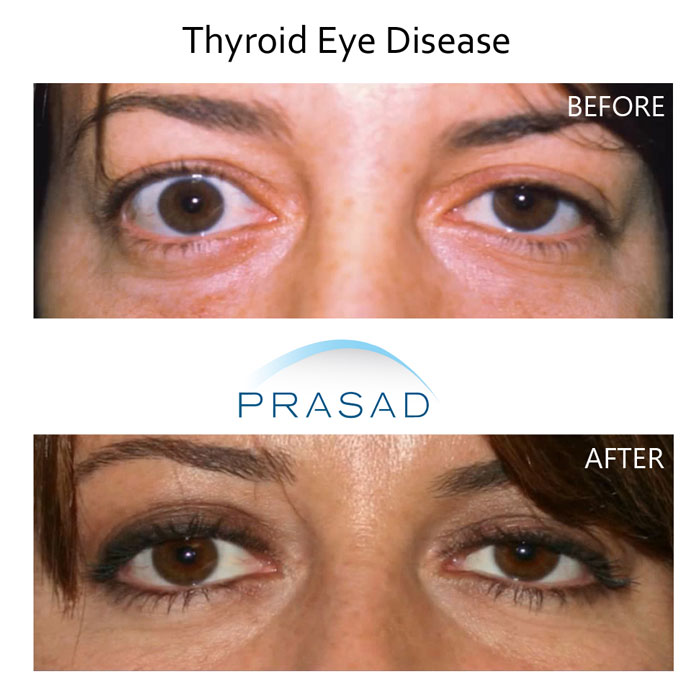
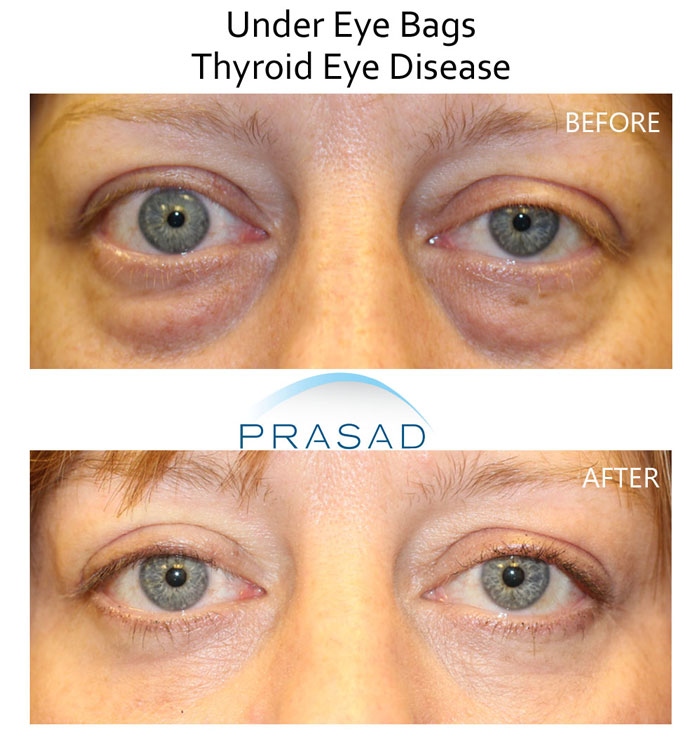
Potential Challenges and Secondary Procedures
It’s important to note that some patients with thyroid eye disease may face challenges achieving the desired results, and secondary procedures may be necessary.
Restoring Confidence and Facial Appearance
I’ve seen how thyroid eye disease can have a significant impact on a person’s facial appearance. Once the eyes stabilize in the fibrotic stage, I work with patients to develop a treatment strategy that best addresses their aesthetic concerns with minimal risk. I have helped many patients restore their confidence, and feel great about their appearance following surgery. I hope you found this information helpful.
Thyroid Eye Disease Specialist Manhattan, NYC and Long Island, New York
Dr. Amiya Prasad is a Board-certified cosmetic surgeon and Fellowship-trained oculofacial plastic and reconstructive Surgeon. He’s been in practice in Manhattan, and Long Island for over 30 years. Throughout his career, Dr. Prasad has helped many people with thyroid eye disease improve their appearance through different specialized procedures, specific to the unique issues associated with thyroid related immune orbitopathy.
To schedule a consultation, fill out the contact form below, or you may call any of our offices at (212) 265-8877 for Manhattan, New York City; (516) 742-4636 for Garden City, Long Island; or (703) 356-1336 for Vienna, Virginia.
